
- Home
- Photography Tours
- Diary / Blog
- Galleries
- Foreign Trips
- Tasmania 2016
- NE Queensland 2016
- Western Alps 2016
- NE Spain 2016
- Australia's Wet Tropics 2015
- Australia's Top End 2015
- SW Australia 2015
- Switzerland 2015
- Andalucia 2015
- Belize 2015
- Australia 2014
- Switzerland 2014
- Belize 2014
- Bahama Islands 2014
- Switzerland 2013
- Ecuador 2012-2013
- Florida 2011-2012
- Vancouver Island 2011
- Australia 2010
- Peru 2008
- Bulgaria 2007
- Lesvos 2006
- California 2006
- New Zealand 2005
- Extremadura 2005
- Goa, India 2004
- The Gambia 2003
- About
March 2014
7th-13th March 2014
La Milpa, Belize
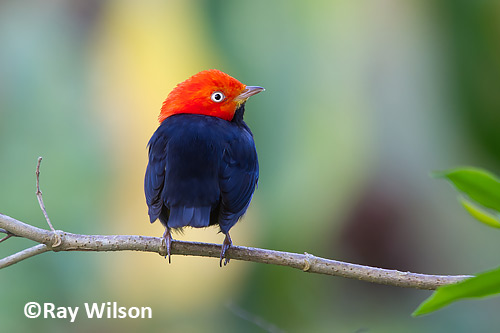
male Red-capped Manakin (Pipra mentalis)
My next port-of-call was La Milpa, in the northwest corner of Belize, very close to the Mexican border. The habitat here is dense, deciduous rainforest so the range of species found here is totally different to those found at Crooked Tree.
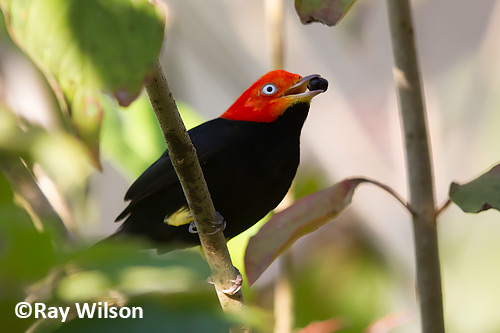
male Red-capped Manakin (Pipra mentalis)
My favourite bird of my stay here was definitely the Red-capped Manakin, a bird I have always wanted to see ever since watching David Attenborough's "Life of Birds" back in the '90's. He showed a priceless piece of footage in that programme of the Red-capped Manakin's display and anyone who thinks Michael Jackson had original dance moves should watch that video. These beautiful, little birds have been "moon-walking" to impress the ladies for countless millenia before Jacko came along, and I was lucky enough to witness this marvel of the natural world it for myself on the first day of my stay at La Milpa!
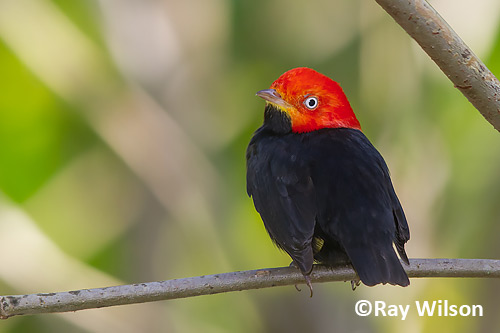
male Red-capped Manakin (Pipra mentalis)
The dowdy female didn't seem anywhere near as impressed by his display as I was and totally ignored his advances...
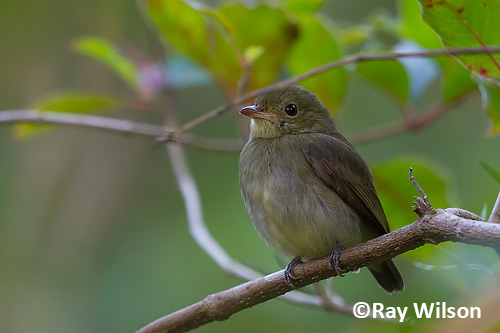
female Red-capped Manakin (Pipra mentalis)
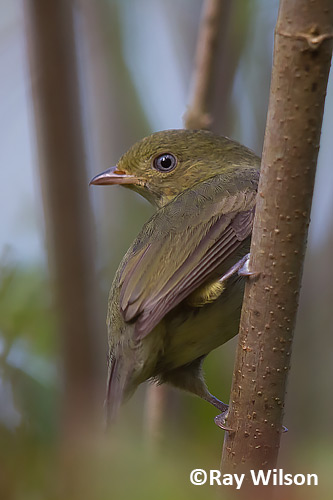
female Red-capped Manakin (Pipra mentalis)
I was doubly fortunate to witness the Red-capped Manakin's display because that wasn't actually the species I was looking for at the time! Vladimir, one of the wardens on the reserve, had told me there was an active White-collared Manakin lek just opposite his office and it was this species I had gone over to try and photograph. Unfortunately, the males didn't emerge from the dense cover and all I was able to see of them was partially obscured birds in the gloom of the undergrowth. The female, however, was much more obliging and popped out into the open to allow its portrait to be taken.
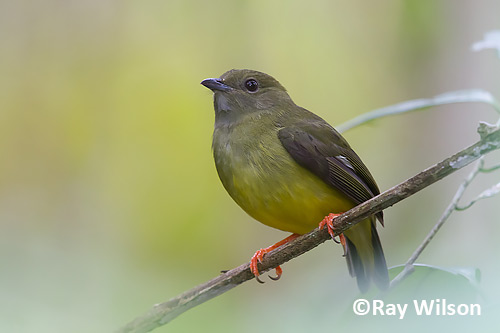
female White-collared Manakin (Manacus candei)
Another stunning bird I saw on my first afternoon at La Milpa was a gorgeous Ornate Hawk-eagle, one of the most striking raptors to occur in the neotropics.
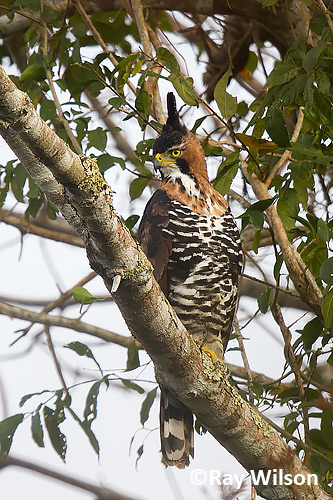
Ornate Hawk-eagle (Spizaetus ornatus) |
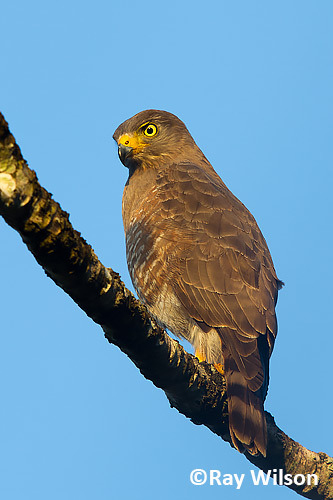
Roadside Hawk (Buteo magnirostris) |
During my stay at La Milpa, I saw 3 species of Trogon: Black-headed was the most common, but I also saw several Violaceous Trogons and a couple of Slaty-tailed Trogons.
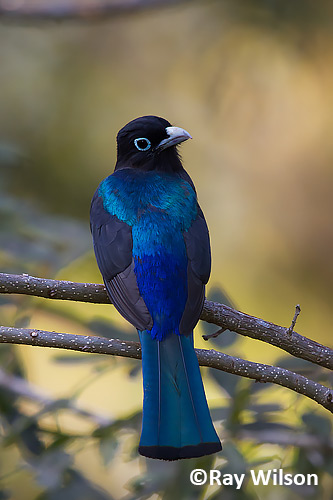
Black-headed Trogon (Trogon melanocephalus) |
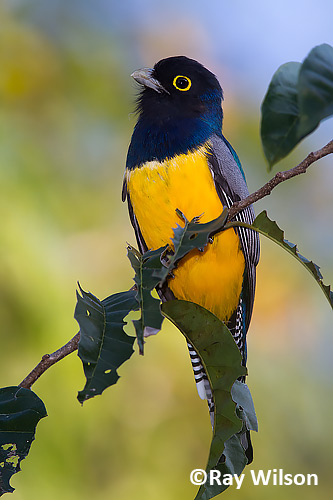
Violaceous Trogon (Trogon violaceus) |
Along the road in the early mornings, Great Curassows could often be observed at the edge of the dense forest as they made their way down to the pond for a drink.
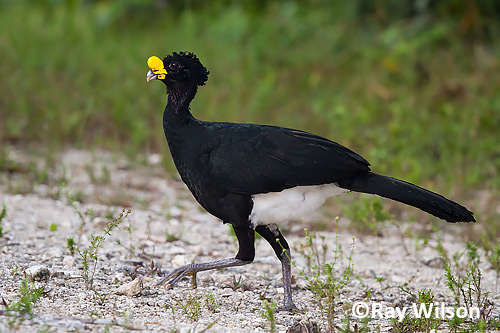
male Great Curassow (Crax rubra)
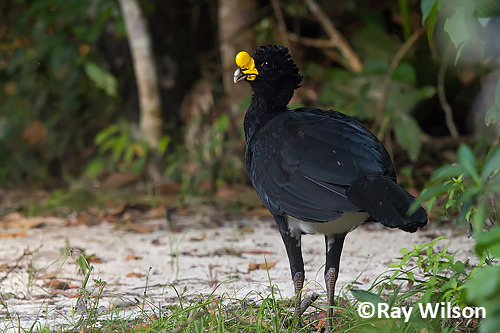
male Great Curassow (Crax rubra)
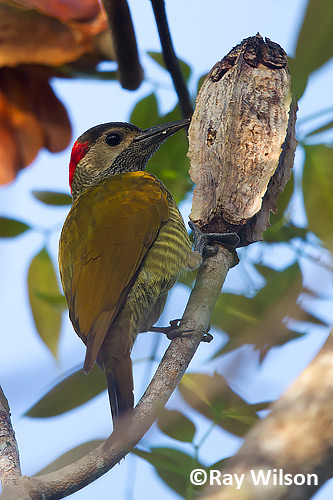
Golden-olive Woodpecker (Piculus rubiginosus)
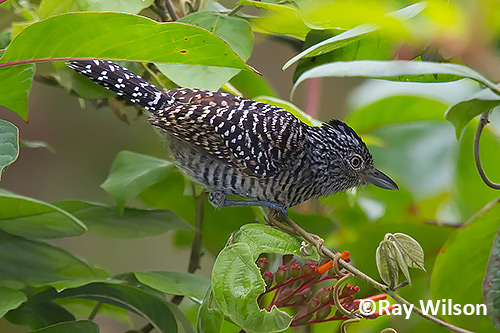
Barred Antshirke (Thamnophilus doliatus)
Around the main lodge building, Red-legged Honeycreepers regularly came down to drink the sugar water in the hummingbird feeders...
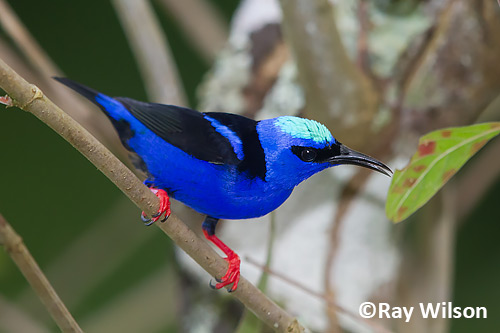
male Red-legged Honeycreeper (Cyanerpes cyaneus)
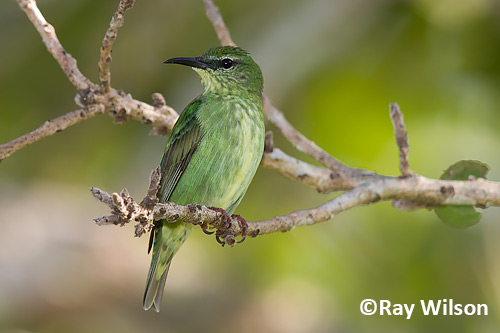
female Red-legged Honeycreeper (Cyanerpes cyaneus)
The vast majority of the hummingbirds visiting the feeders were again the ubiquitous Rufous-tailed Hummingbirds, but a few White-bellied Emeralds also made an appearance from time to time.
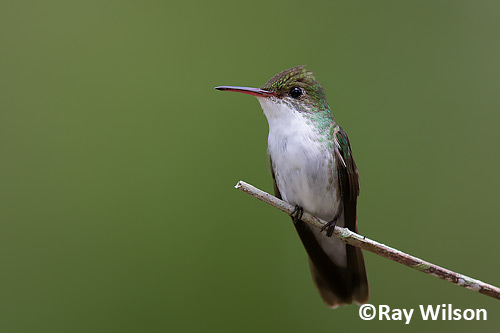
White-bellied Emerald (Amazilia candida)
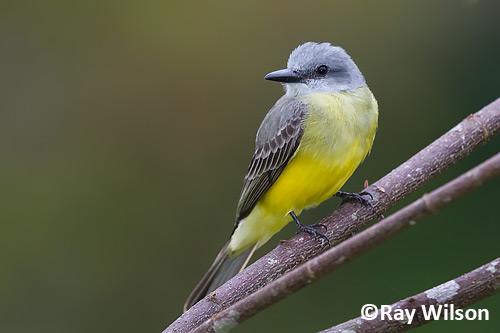
Tropical Kingbird (Tyrannus melancholicus)
In the branches overhanging the small pond, a Green Kingfisher could often be found fishing for its dinner...
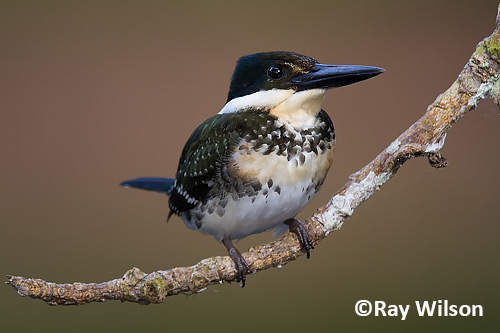
Green Kingfisher (Chloroceryle americana)
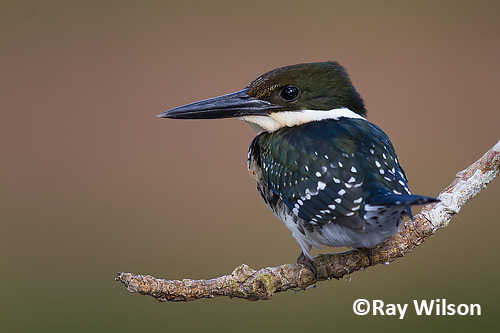
Green Kingfisher (Chloroceryle americana)
...while in the pond itself, the resident Morelet's Crocodile silently lurked...
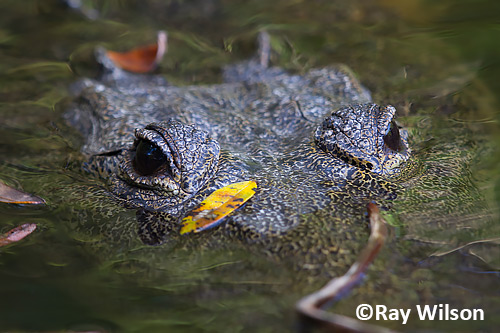
Morelet's Crocodile (Crocodylus moreletii)
...and Common Sliders hauled themselves out onto partly submerged branches to bask in the afternoon sun, often attended by butterflies seeking to drink the moisture around the turtle's eyes to gain valuable salts and minerals contained within its tears.
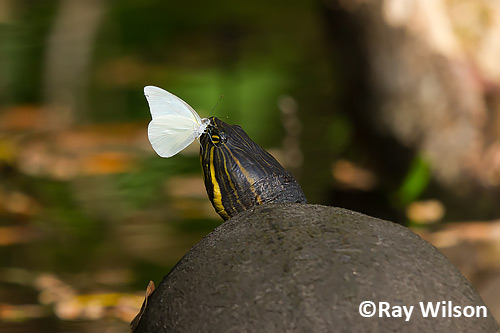
Meso-American Slider (Trachemys venusta) with a Great Southern White (Ascia monuste) feeding on its tears.
The lawns around the cabanas also had its share of wildlife, with the resident pair of Grey Foxes regularly making an appearance.
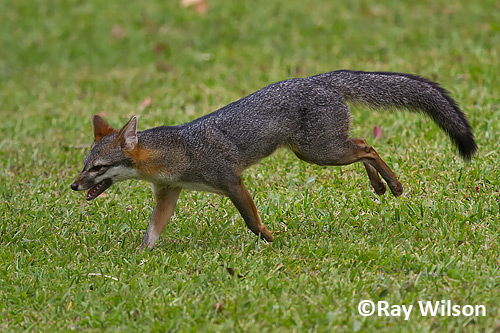
Grey Fox (Urocyon cinereoargenteus)
The Lesser Swallow-tailed Swift shown below had somehow managed to get tangled up in some vegetation and was attempting to fly with a big ball of moss (visible in the top right of the below photo) hanging from its neck! It soon became exhausted, however, and it was quite easy to capture it and gently remove the plant fibres that were wrapped around its neck. The bird thankfully appeared uninjured and in excellent condition, despite its ordeal, and flew off strongly as soon as I opened my hands to release it.
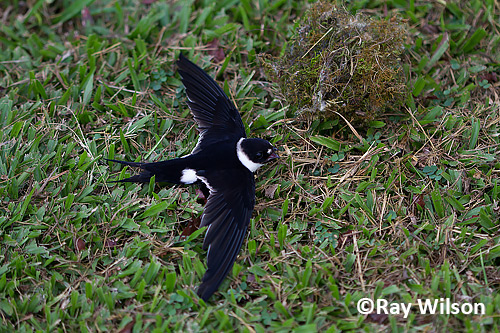
Lesser Swallow-tailed Swift (Panyptila cayennensis)
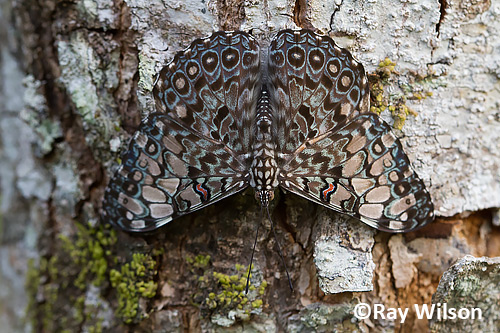
Grey Cracker (Hamadryas februa)
Ray Wilson owns the copyright of all images on this site.
They may not be used or copied in any form without prior written permission.
raywilsonphotography@googlemail.com